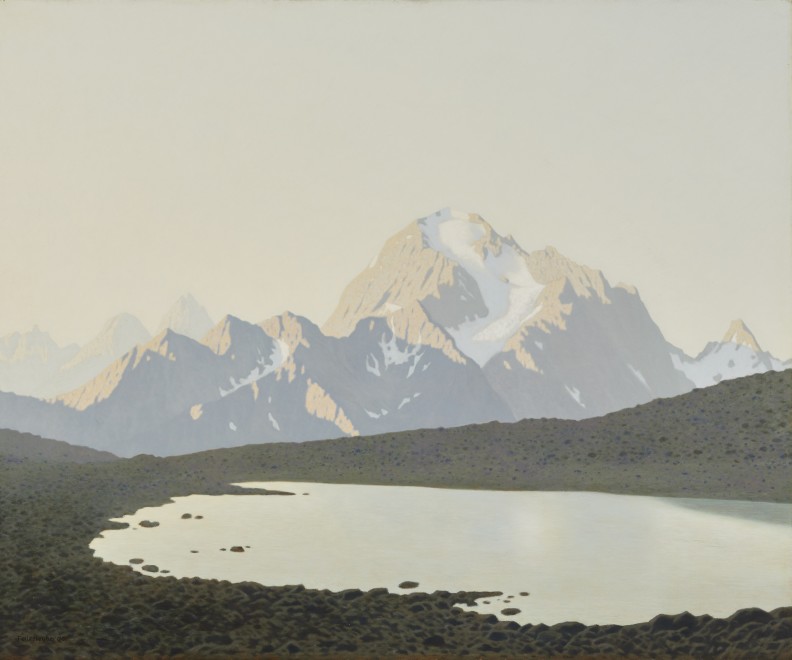Provenance
Peter Kovacek, Vienna;
Private collection, Austria
Felix Heuberger was the son of the well-respected Austrian composer Richard Heuberger. He studied architecture at the Technical University in Vienna and became an engineer. During the First World War, he served as a cavalry officer on the southern and eastern fronts. Never enthusiastic about his work as an engineer, Heuberger taught himself to paint. In 1919 he submitted what he considered his first two successful pictures to the Vienna Künstlerhaus. These were well reviewed and led to many new commissions, launching his career. Since childhood, Heuberger spent holidays with his family in the Austrian Alps, and here he discovered his love for nature and the mountains, the subject which was to dominate his creative output.
In 1923 Heuberger went to live in the Tyrol region of eastern Austria. Here, he studied the Kalkkögel mountain range which forms part of the Stubai Alps. With great dedication he developed a near photographic realism and meticulous technique ideal for capturing the hazy light effects of these high mountains. However, Heuberger’s paintings display a spiritual essence and ethereal glow that far surpasses mere documentary photography. His compositions, as in the present case, are devoid of human beings and convey nature in the form of mountains, trees, and atmosphere as a vibrating, living presence.
Although Heuberger received a retrospective exhibition of his works at Innsbruck in 1947, he remained known to only a small circle of collectors. He continued to paint and make prints into the 1950s, but his finest works are those of the early 1930s which radiate a remarkable, almost mystical, stillness, and place him firmly in the Romantic tradition of 19th-century masters such as Caspar David Friedrich (Fig. 1). Curiously enough, the blurred photographic realism of Gebirgsseealso recalls the ‘out of focus’ Alpine compositions of the contemporary German artist, Gerhard Richter (Fig. 2).
